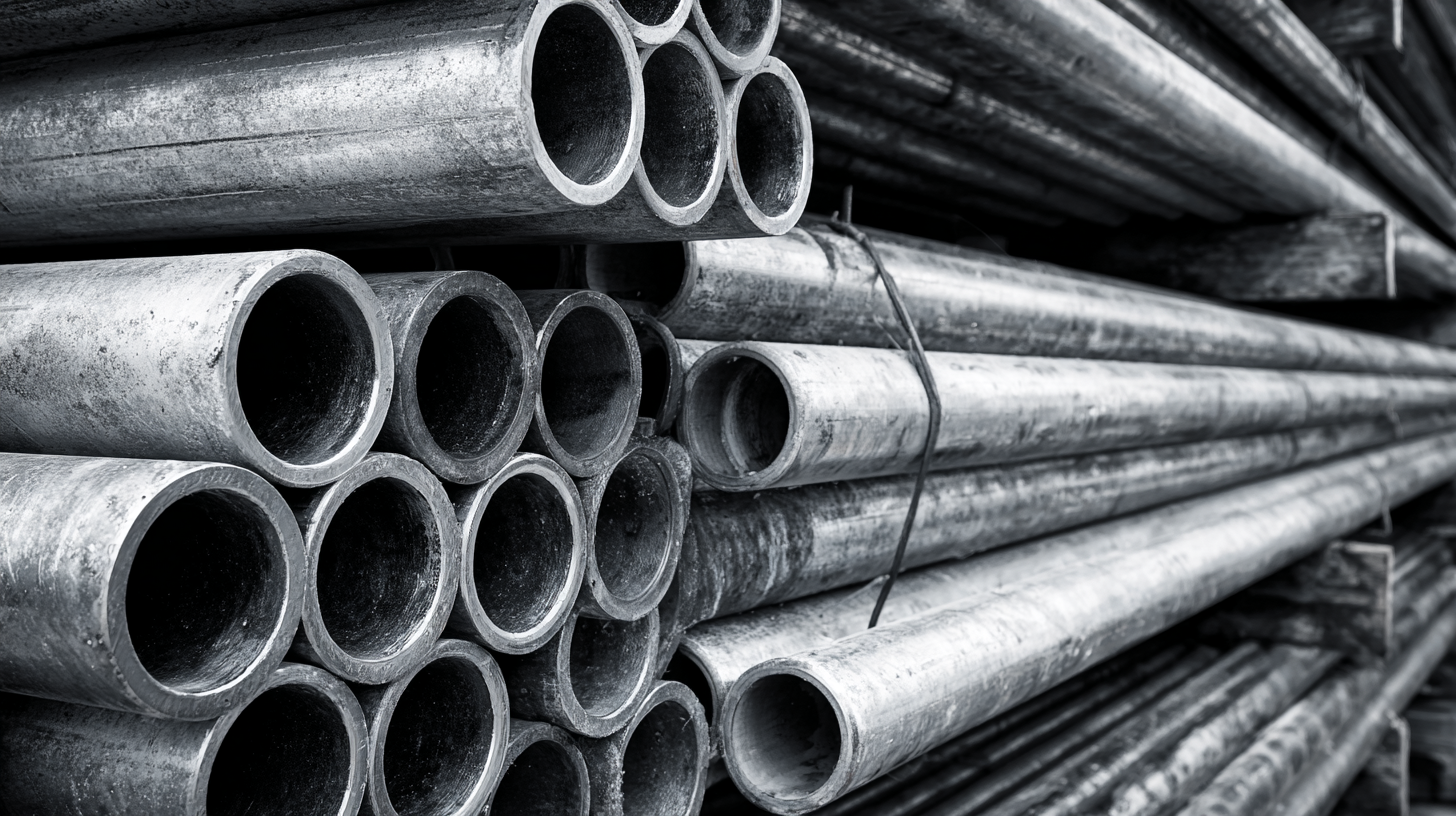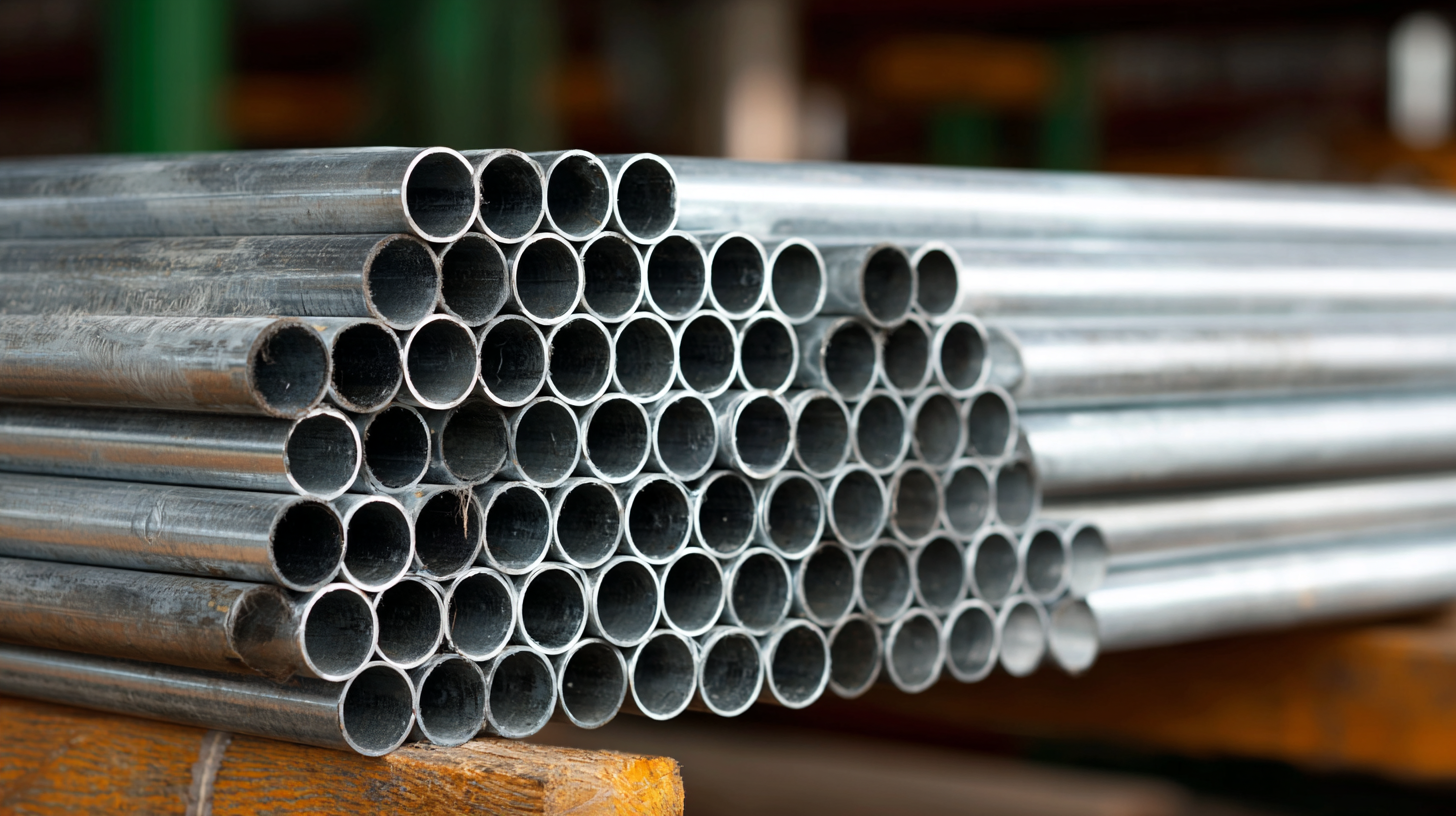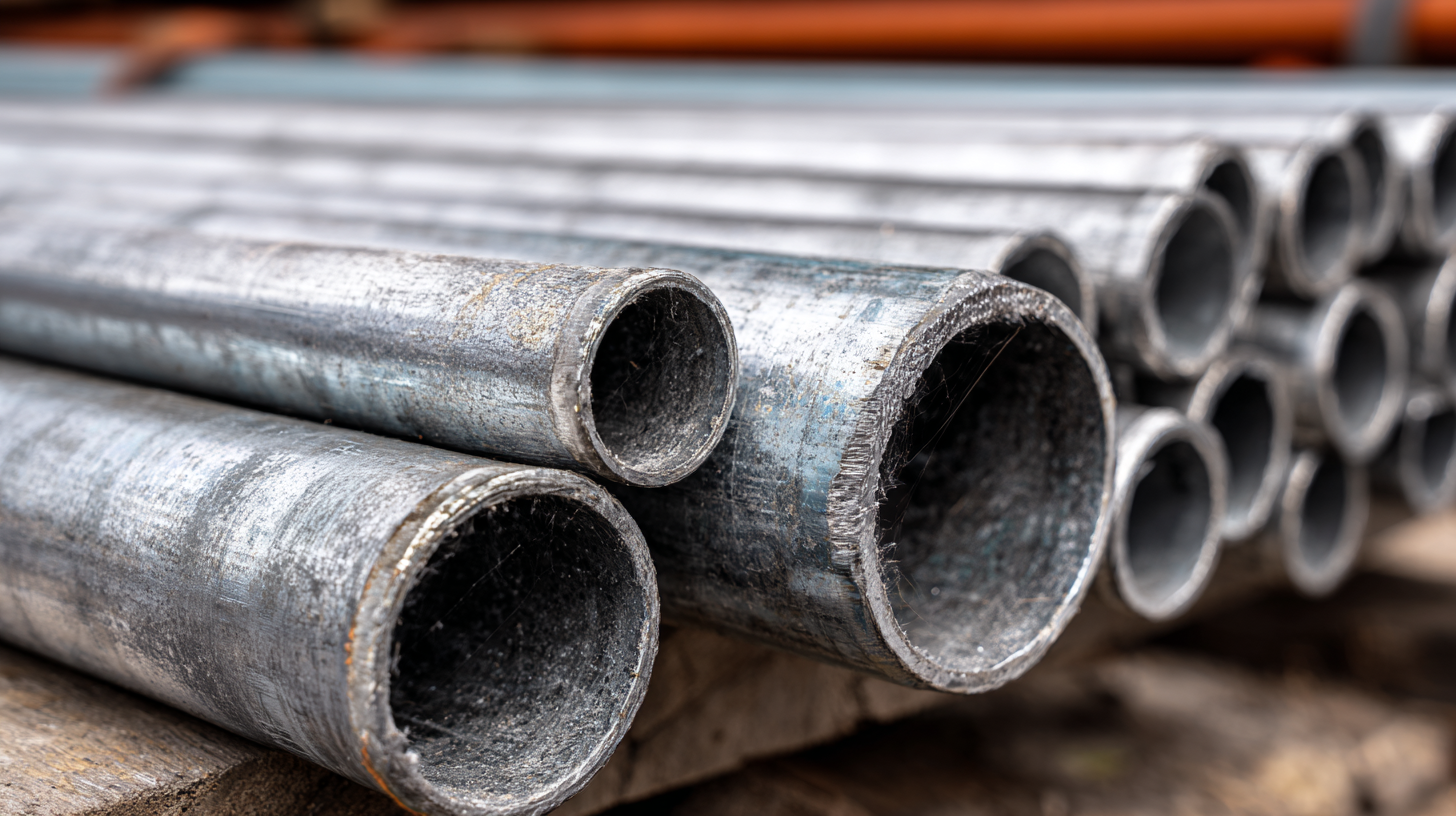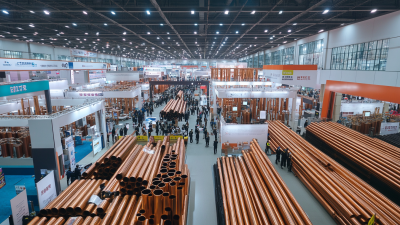In the realm of modern construction, the choice of materials significantly impacts both the durability and efficiency of structures. Among these materials, **Galvanized Pipe** stands out for its unique blend of strength and corrosion resistance, making it an ideal choice for a wide array of applications. This introduction to the benefits and applications of galvanized pipe delves into its essential role in contemporary construction projects, highlighting not only its longevity but also its cost-effectiveness over time. As builders seek reliable solutions for plumbing, framing, and scaffolding, galvanized pipe emerges as a versatile option that meets stringent industry standards while providing exceptional performance. In this guide, we will explore practical tips and insights on how galvanized pipe can be effectively utilized, ensuring both structural integrity and sustainability in your construction endeavors.

When selecting galvanized pipe for construction projects, it's essential to consider the specific requirements and applications of the material. Galvanized pipes, known for their corrosion resistance due to a protective zinc coating, are commonly used in a variety of sectors, including plumbing, HVAC, and structural applications. The appropriate type of galvanized pipe will vary based on factors such as the environment it will be installed in, pressure ratings, and the requirements for rigidity or flexibility. For instance, in areas prone to moisture, opting for a higher-grade galvanized pipe can enhance durability.
Additionally, understanding the various standards and certifications can help in making an informed decision. It’s important to assess factors like pipe diameter, wall thickness, and the method of joining (welded versus seamless) to ensure that the selected pipe meets both industry standards and the specific demands of the project. Constructing a shortlist of potential suppliers based on these criteria can facilitate a more streamlined procurement process, ultimately leading to a successful construction outcome.
When evaluating the cost-effectiveness of using galvanized pipe in modern construction, one must consider multiple factors, including material longevity, maintenance costs, and installation efficiency. Galvanized pipes are manufactured by coating steel with a layer of zinc, which protects against corrosion and extends their lifespan. This durability can translate to lower long-term costs, especially in environments prone to moisture and corrosion. Additionally, galvanized pipes are generally less prone to leaks compared to other materials, further reducing the potential need for expensive repairs over time.
Another crucial aspect to evaluate is the impact of galvanized pipe on water quality. The recent emphasis on identifying and replacing lead pipes highlights the importance of using safe materials in plumbing systems. Unlike lead pipes, galvanized steel does not pose significant health risks, making it a favorable choice for constructing safe residential and commercial plumbing systems. Moreover, with certification standards increasingly emphasizing quality and environmental safety, using galvanized pipes that comply with relevant regulations can also enhance the overall marketability of projects. By carefully analyzing these factors, stakeholders can make informed decisions regarding the installation of galvanized pipes in their construction projects.
 When installing galvanized pipe, proper preparation and technique are essential to ensure maximum durability and longevity. First, it is crucial to select high-quality galvanized pipes and fittings, examining them for any signs of corrosion or damage before beginning the installation. The surface must be clean and dry to ensure a strong seal when joined, whether you're using threaded connections or couplings. Additionally, applying a suitable pipe joint compound can enhance the seal, preventing leaks and extending the lifespan of the installation.
When installing galvanized pipe, proper preparation and technique are essential to ensure maximum durability and longevity. First, it is crucial to select high-quality galvanized pipes and fittings, examining them for any signs of corrosion or damage before beginning the installation. The surface must be clean and dry to ensure a strong seal when joined, whether you're using threaded connections or couplings. Additionally, applying a suitable pipe joint compound can enhance the seal, preventing leaks and extending the lifespan of the installation.
During installation, it's imperative to follow the correct procedures to avoid stress on the pipes that could lead to premature failure. Pipes should be cut to the appropriate length using a pipe cutter to ensure smooth edges, and they should be securely supported with brackets at regular intervals to minimize sagging. When connecting the pipes, proper torque should be applied to threaded joints to maintain a secure and leak-proof fit. Lastly, inspecting the entire system after installation for any leaks can help to further reinforce the durability of the galvanized piping in modern construction applications.
Galvanized pipes are widely praised for their corrosion resistance, making them a popular choice in various construction applications. However, to maximize their lifespan and performance, proper maintenance and care are essential. According to a report by the National Association of Home Builders, galvanized pipes can last up to 40 years with appropriate maintenance, significantly exceeding their average lifespan of 20 years when neglected. Regular inspections to check for rust, leaks, and mineral buildup can prevent costly repairs and replacements.
In environments prone to humidity or corrosive chemicals, additional care is vital. Using protective coatings and ensuring proper drainage can help minimize exposure to moisture, which is a leading cause of deterioration. A study conducted by the American Society for Testing and Materials found that pipes exposed to excessive humidity without protection could experience a reduction in lifespan by nearly 50%. Therefore, implementing routine maintenance practices, such as cleaning, inspecting for signs of wear, and applying protective treatments, is crucial to ensure the durability and functionality of galvanized pipes across various environments.
| Dimension | Benefit | Application | Maintenance Tips |
|---|---|---|---|
| 1/2 inch | Corrosion Resistance | Water Distribution Systems | Regular inspections for signs of wear. |
| 3/4 inch | Durability | Hydraulic Systems | Clean with alkaline cleaners to remove buildup. |
| 1 inch | Cost-Effective | Construction Framework | Apply a protective coating if exposed to harsh environments. |
| 1 1/4 inch | Versatility | Industrial Applications | Ensure proper drainage to avoid water pooling. |
| 2 inch | Recyclability | Fire Sprinkler Systems | Inspect for leaks and repair immediately. |
 Galvanized pipe has become a staple in modern construction due to its durability and resistance to corrosion. One of the most common applications of galvanized pipe is in plumbing systems, where it is used for water supply lines and drainage systems. Its ability to withstand moisture makes it a reliable choice for both residential and commercial buildings. Additionally, galvanized pipe is often utilized in structural applications, such as supports and frames, where strength and longevity are required.
Galvanized pipe has become a staple in modern construction due to its durability and resistance to corrosion. One of the most common applications of galvanized pipe is in plumbing systems, where it is used for water supply lines and drainage systems. Its ability to withstand moisture makes it a reliable choice for both residential and commercial buildings. Additionally, galvanized pipe is often utilized in structural applications, such as supports and frames, where strength and longevity are required.
Tips: When selecting galvanized pipe for your construction project, consider the specific requirements of your design, such as temperature and pressure ratings. Regular maintenance, such as inspecting for signs of wear, can also extend the lifespan of your galvanized pipes.
Another prevalent application of galvanized pipe is in HVAC systems, including ductwork and ventilation systems. The corrosion-resistant nature of galvanized steel helps maintain the integrity of the system, ensuring efficient airflow and reducing the risk of leaks. Moreover, galvanized pipes can be found in outdoor applications, such as fencing and scaffolding, due to their robust nature and aesthetic appeal.
Tips: Always ensure proper installation techniques are followed to maximize the benefits of galvanized pipes in your building design. Using the right fittings and connectors can prevent leaks and maintain the structural integrity of your project.









